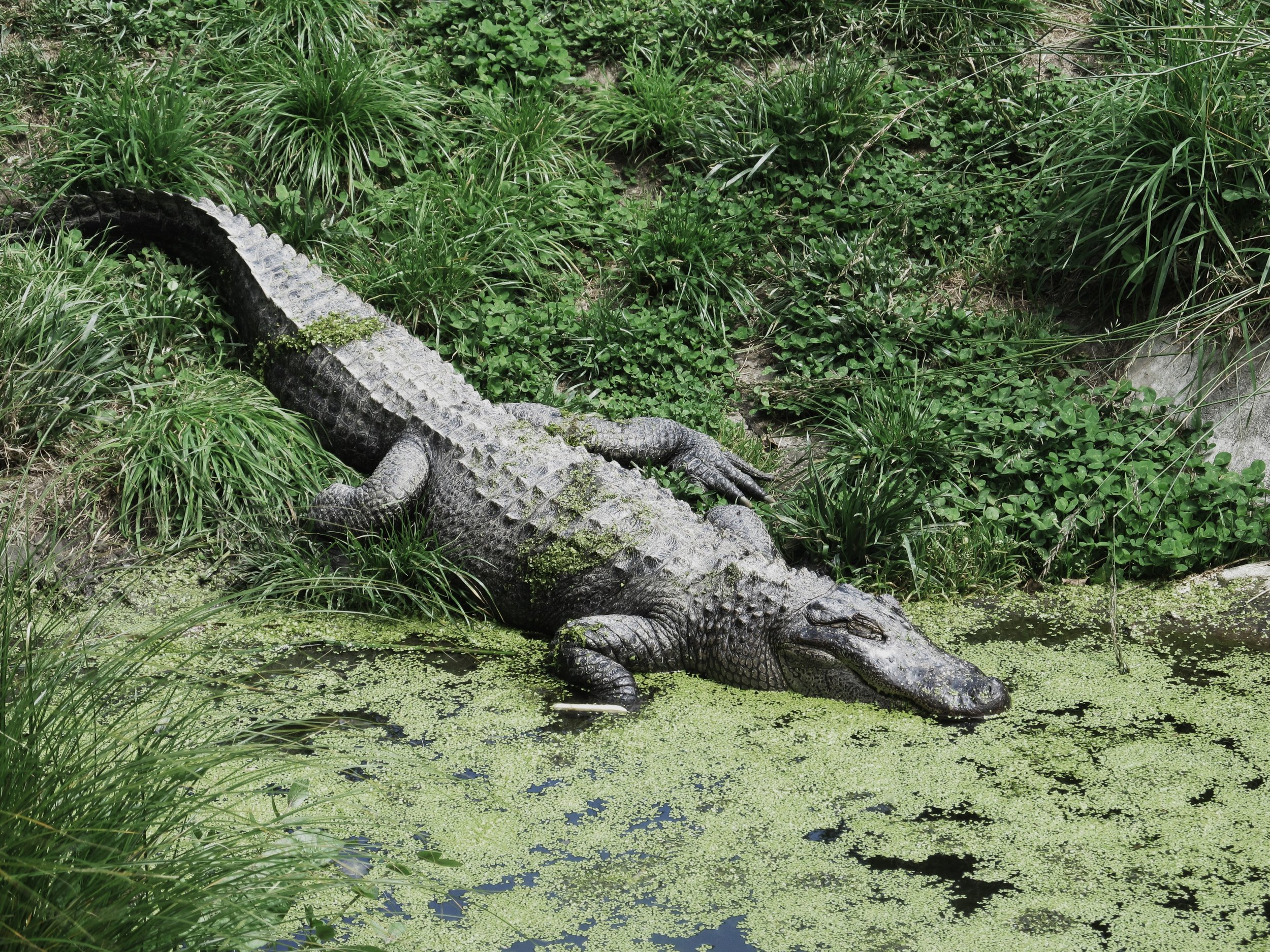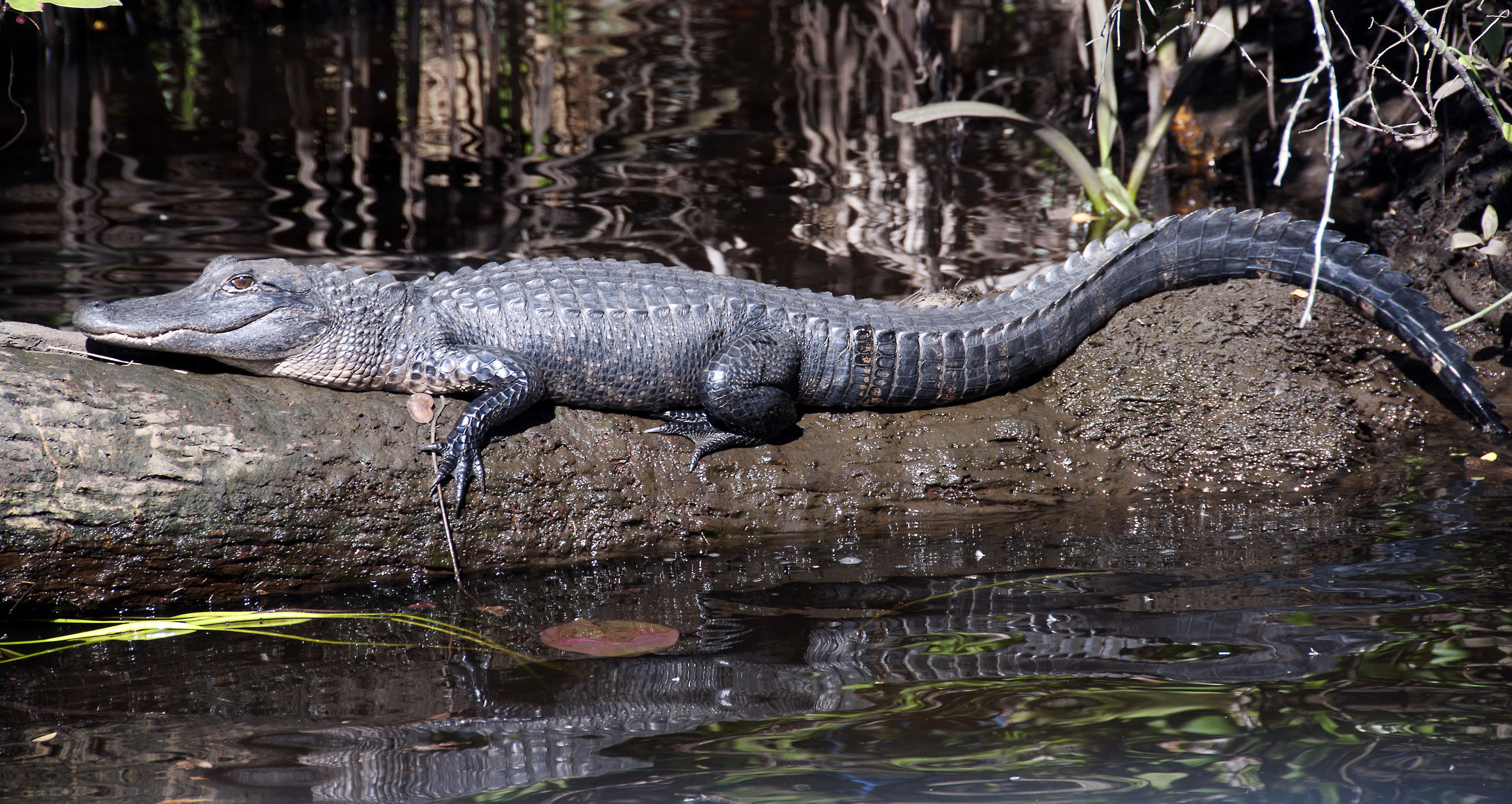Alligator
An alligator is a crocodilian in the genus Alligator of the family *Alligatoridae*. The two living species are the American alligator (*A. mississippiensis*) and the Chinese alligator (*A. sinensis*). In addition, several extinct species of alligator are known from fossil remains. Alligators first appeared during the Paleocene epoch about 66 million years ago.
The name "alligator" is probably an anglicized form of el lagarto, the Spanish term for "the lizard", which early Spanish explorers and settlers in Florida called the alligator. Later English spellings of the name included allagarta and alagarto.
An average adult American alligator's weight and length is 790 lb and 13.1 ft, but they sometimes grow to 14 ft long and weigh over 450 kg 990 lb. The largest ever recorded, found in Louisiana, measured 19.2 ft. The Chinese alligator is smaller, rarely exceeding 6.9 ft in length. In addition, it weighs considerably less, with males rarely over 99 lb.
Adult alligators are black or dark olive-brown with white undersides, while juveniles have strongly contrasting white or yellow marks which fade with age.
No average lifespan for an alligator has been measured. In 1937, an adult specimen was brought to the Belgrade Zoo in Serbia from Germany. It is now at least 80 years old. Although no valid records exist about its date of birth, this alligator, officially named Muja, is considered the oldest alligator living in captivity.
American alligators are found in the southeast United States: all of Florida and Louisiana; the southern parts of Georgia, Alabama, and Mississippi; coastal South and North Carolina; East Texas, the southeast corner of Oklahoma, and the southern tip of Arkansas. According to the 2005 Scholastic Book of World Records, Louisiana has the largest alligator population. The majority of American alligators inhabit Florida and Louisiana, with over a million alligators in each state. Southern Florida is the only place where both alligators and crocodiles live side by side.
American alligators live in freshwater environments, such as ponds, marshes, wetlands, rivers, lakes, and swamps, as well as in brackish environments. When they construct alligator holes in the wetlands, they increase plant diversity and provide habitat for other animals during droughts. They are, therefore, considered an important species for maintaining ecological diversity in wetlands. Farther west, in Louisiana, heavy grazing by coypu and muskrat are causing severe damage to coastal wetlands. Large alligators feed extensively on coypu, and provide a vital ecological service by reducing coypu numbers.

By Ashleigh Louise. CC BY-ND 2.0, via Flickr

By MajJar. CC BY-NC 2.0, via Flickr
